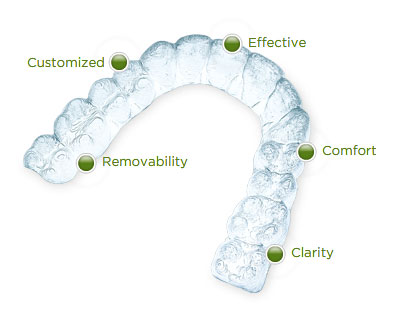Invisalign Vs. Braces: 10 Things You Need To Know


When you are faced with a choice between Invasalign or braces, you might be confused. Ultimately, your dentist should be the deciding vote, since he is, after all, the expert.
 However, since you’re the one who will be responsible for the daily wear and care of whichever option you choose, in the end, the success of the treatment will depend a lot on you.
However, since you’re the one who will be responsible for the daily wear and care of whichever option you choose, in the end, the success of the treatment will depend a lot on you.
Invisalign Or Braces?
Invisalign and braces will affect you on a daily basis in different ways. When you are making choice between the two of them, consider your age, your lifestyle, your expectations for the outcome, your budget, and your willingness and ability to adhere to the instructions your dentist gives you.
Here are ten facts you need to know about Invasalign and braces:
1. The Invisalign appliance is low profile. For mature people with professional jobs that they have to go to everyday, this is a plus as far as image goes. Other people, such as high school students, may appreciate the low-profile look of Invisalign if they are self-conscious or feel they may be ridiculed for wearing braces.
2. Braces are considered high profile, but there are newer versions with transparent brackets that adhere to the front of the tooth. Even from afar, however, all traditional braces can be noticed. Unfortunately, adolescent wearers are prone to being called unfriendly names such as “train tracks,” “metal mouth,” and the like, at least in the beginning weeks, when classmates are not yet used to seeing the braces.
3. Invisalign mouthpieces can be removed and reinserted by the wearer on occasions when it is warranted. However, they usually must be worn at least 22 hours in each 24-hour period to be effective.
4. Braces can only be removed through an involved process at the dentist office. They are considered permanent for generally two years.
5. Invisalign appliances are essentially painless, though there many be a very minor sensation when you change to the next lower sized appliance.
6. Braces can be uncomfortable, but not painful, immediately following a tightening appointment.
7. For complex cases involving tooth alignment, braces may be the only option. In fact, Invisalign may be ineffective at certain complicated alignment issues.
8. Braces have been blamed for extraordinary tooth decay that is evident only after the braces are removed. It is easy for food particles to get stuck in the brackets and wire. Though patients are instructed as to best dental health practices while wearing braces, if they fail to clean properly after eating and drinking, or eat certain foods, tooth decay is more likely to occur with traditional braces.
9. Invisalign wearers can remove their appliance while eating or drinking, so there is little to no chance that food particles will get stuck in the appliance. In addition, they can remove the appliance to brush their teeth, so they have complete access to all tooth and gum surfaces for cleaning.
10. Invisalign appliances generally need to be changed every two weeks. Braces require office visits at least monthly.
Invisalign Vs Braces Cost
If you are wondering about how much does Invisalign cost versus braces, both Invisalign and braces are usually at least partially covered under certain dental insurance plans. You will only have to pay whatever your deductible is.
Whether you choose Invisalign or braces, make sure you ask your Invisalign dentist any questions you may have. They will be able to provide you with all the necessary information you need to make an educated decision.
Image Credit: hto2008



